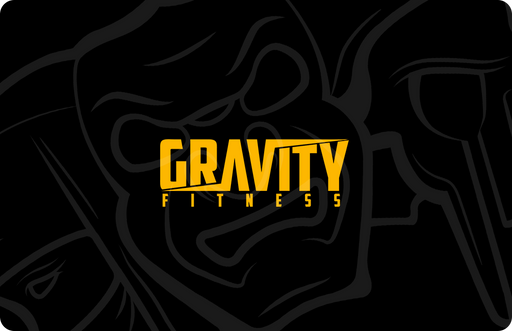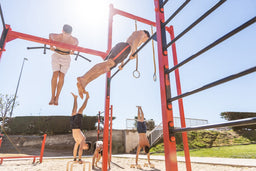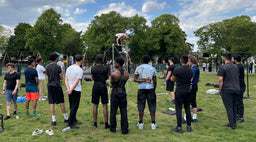
Understanding your cycle and how it affects training
Understanding your cycle and how it affects training
If you have a menstrual cycle, you already know the different phases affect your appetite, energy levels, and mood. But how exactly does your cycle impact training – and what should you do to make the most of it?
What are the stages of the menstrual cycle?
Your cycle has two phases (punctuated by ovulation), and they can have a significant impact on your strength (real and perceived), mood, sleep, power, metabolic state, appetite and digestion.
Day 0 - Day 14 (The Follicular Phase)
From the day you start menstruating to 14 days later is the follicular phase, which is further broken down into the early and the late follicular phase. In the follicular phase, your body releases FSH (follicle stimulating hormone).
Oestrogen levels start fairly low and rise during the late follicular phase, and progesterone stays low until it rises right at the end of this phase.
Higher oestrogen levels can reduce appetite and dampen cravings for carby, fatty, sugary foods. It also improves insulin sensitivity and stabilises blood sugar levels.
Oestrogen tends to have a positive effect on training, by boosting muscle growth, aiding recovery, and helping you feel less muscle soreness. Studies have shown that the more oestrogen you have in your blood, the harder you can contract your muscles. So if you feel strong and powerful in the first half of your cycle – you’re not imagining it!
Day 14 (Ovulation)
Around 14 days after your period starts, you’ll ovulate. This marks the start of the next phase which is called the luteal phase. You get a bump of testosterone at this point.
Day 15 - Day 28 (The Luteal Phase)
The luteal phase is also divided into early and late phases. During this phase, oestrogen levels drop – and this can cause a drop in dopamine and serotonin, too. This can obviously impact mood, motivation, focus and drive for training.
As that’s happening, progesterone levels are rising, and this is responsible for reduced insulin sensitivity, increased levels of ASP and LPL enzymes, reduced tendon strength, reduced recovery capabilities, and less ability to recruit muscle fibres. Great!
How does your cycle affect training?
You don’t need us to tell you how different the first half of your cycle can feel from the second. But reading the explanation of all the hormone changes puts it into context. Many women don’t feel much of a difference, but others will really notice feeling stronger, leaner, and more energised during the first half of their cycle…and hungrier, weaker, and less motivated in the second half.
What does this mean for training? You can expect to feel stronger and more powerful in both body and mind during the follicular phase, so it makes sense to focus on big lifts and power moves in those weeks. You might feel slower and more tired in the luteal phase, and that’s a good time to programme a deload, work on weaknesses, or introduce more recovery sessions.
Want one bit of good news about that luteal phase? All that extra progesterone can boost your BMR by up to 10%. This could mean your body burns 150+ more calories a day. (Good to know if you’re someone who finds themselves magnetically drawn to chocolate Hobnobs during that time…)
What about PMS?
If you experience PMS symptoms at the end of the luteal phase, it might help to know it’s due to low oestrogen and low progesterone which are at their lowest levels for a few days at this point. This can lead to tiredness, muscle aches, digestive problems, poor co-ordination and more. The good news is this only lasts a few days.
What to expect during the phases of your cycle
Research into training during the menstrual cycle is inconclusive (probably because we’re all different!) but the general recommendations are to expect less hunger, more strength, more explosive power, and better recovery in the first two weeks of your cycle. Then in the final half of your cycle, you can reasonably expect diet to be more of a challenge, ad to feel weaker and less powerful in training.
How to eat and train during your cycle
One thing the research agrees on is that our strength levels actually don’t change much throughout our cycle. What can change is our energy levels, our motivation, and our perception of our strength.
If you programme your own training or have a coach programming for you, it’s worth tracking your lifts, recovery, and energy levels. But note that your cycle doesn’t automatically mean your training will be impacted.
Nutrition is a different matter. Almost all women report significant changes in appetite, hunger, cravings and digestive health across their cycle. Capitalise on the lower hunger follicular phase (but don’t under-fuel your sessions). And make room for extra hunger in the luteal phase by increasing carbohydrates slightly, especially before training and maybe before bed.
Follicular phase:
- cravings have decreased or vanished
- reduce carbs and calories to normal levels
- higher oestrogen levels mean better ability to use carbohydrates
- best time for high intensity and low volume
- low rep weight training, HIIT, sprinting
Luteal phase:
- body is more likely to add body fat
- you might experience more cravings
- best time for lower intensity work or higher volume/
- prioritise sleep and consider more rest days
- a good time for a recovery or deload week
Find the best functional training tools for every stage of training at the Gravity Fitness store.











































